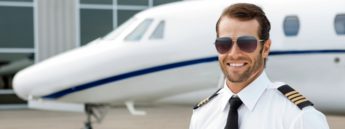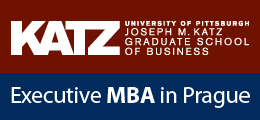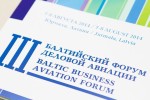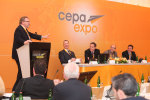TOP 15 Terms to Know Before Initiating Pilot Training Course
Lithuania’s BAA Training recently listed 15 terms a student should know before strarting his pilot training course.
We know…you have been spending a few hours every day reading various flight training academies’ websites and trying to figure out what exactly are they all trying to say with those abbreviations, acronyms, terms and phrases. In order to make you feel that there are people out there who truly want to help you understand every detail of initial pilot training, we have made a list of fifteen abbreviations and phrases. The reason you need to know them is that it will help you understand which pilot license course you truly want to pursue, what ratings you need to acquire, what flights you must perform and many more things. So read on, there is a lot to come!
1. ATPL Integrated (Airline Transport Pilot License) – the highest ranked license which is required by all pilots who are planning to fly large passenger or cargo airplanes weighing 5700 kg or above. ATPL Integrated license course is an intense, almost two years lasting program, and at the end, students acquire so called “ATPL Frozen” (CPL (A)/IR/ME + ATPL theory) license.
“ATPL Frozen” license means that individual has a Commercial Pilot License, Instrument rating, successfully completed ATPL theory exam, and 200 flight hours. The “unfreezing” of the license can only happen when individual logs 1500 flight hours where at least 500 of it has to be in multi-pilot aircraft. Just because the pilot license has a word “frozen” next to it, it does not mean that individual cannot go on and acquire type rating license, apply for a job or build hours on his/her own. All options are available.
2. PPL (A) (Private Pilot License) – is the license which permits an individual to fly airplanes as a hobby, for personal transportation or tourism. Private Pilot License is the most basic course to acquire a pilot license and takes up to a year to complete (can definitely be done faster). Even though this license does not allow to be paid for flying, individual can add-on different rating (i.e. instrument, night flight, or even instructor rating) which then opens numerous opportunities to fly in different time of the day and even teach others how to pilot an airplane. Just like in many occupations – there is always a way to advance and learn.
3. CPL (A) Modular (Commercial Pilot License) – is a license which also permits individual to fly an airplane (note the A next to the license abbreviation) for a compensation, although attaining the license is a bit different process than ATPL Integrated. CPL (A) Modular course is designed in modules which mean that individual can take training in parts and make decisions as he continues with the course. The course is especially practical for those who are not quite sure whether they want to become pilots, if assessment results were not the best, or if there are some improvement needed for English language.
So the way CPL (A) Modular course works is that person goes through PPL theory training, passes exams and already acquires Private Pilot License. Then, if individual decided to continue, the next phase is ATPL theory course. After that comes various ratings, like multi-engine or instrument rating, which are also added like modules and must be renewed periodically. To make it clear – your commercial pilot license doesn’t expire, however various ratings which you must add-on to acquire ATPL Frozen license do, so you must take time to periodically renew it in order to keep the ability to fly aircraft.
At the end of the course individual acquires the same “ATPL Frozen” (CPL (A)/IR/ME + ATPL theory) license and has 200 flight hours just like the above mentioned ATPL Integrated course. So the steps to “unfreeze” the license for CPL (A) Modular license holders are essentially the same.
4. PPL (H) (Private Helicopter Pilot License) – is a specific course designed to acquire helicopter pilot license (note the H next to the abbreviation). Unlike for airplane training, those who decide to learn how to pilot a helicopter must make up the mind about the helicopter type (i.e. Cabri 2, Robinson 22, Robinson 44, etc. ) from the very beginning, because the helicopter type that they will get a license to pilot will be printed on their official license. This is not the case with airplane training. However, if later on individual decided to change his mind, there is a short familiarization course that can be taken to change the helicopter type.
Private Pilot License means that individual can only pilot a helicopter for their own pleasure and benefit and cannot get compensation for it. This is a great opportunity for those who want to keep aviation as a hobby, business people who can fly to the business meetings quickly, or those in a mountainous regions where ground transportation is too difficult to use.
5. CPL (H) (Commercial Helicopter Pilot License) – this is a helicopter pilot license training course specifically designed for individuals who desire to fly helicopters for compensation. Just like in CPL program for airplanes, this one is also divided into modules, but just like mentioned next to the Private Helicopter Pilot License overview, individual must decide which helicopter type he will be flying from the very beginning. Other than learning how to fly a helicopter, the training design is very similar to the airplane training and definitely covers a number of similar subjects which are general for aviation. What is the main difference between airplane and helicopter training is that since individual must pick the type of helicopter from the get go, there is no type rating training after CPL course, only further time building.
6. Aviation English – if you haven’t heard, English language is the official language of aviation. This means that every single pilot must possess a certain level of English language skills and knowledge in order to safely and efficiently work in the cockpit. This of course means that pilots go through the English language training and testing until they achieve required ICAO Level 4 English language proficiency. You will hear about this level a lot, but one thing is certain – if you want to do anything with flying aircraft, you have to know English.
7. Class 1 Medical Certificate – everyone who aspires to become a professional pilot also must fit certain medical regulations. Every pilot must stay physically fit and healthy in order to safely and securely operate an aircraft. These medical checks take about two days to complete and everyone who is planning to fly aircraft as a career must acquire Class 1 Medical Certificate. And even though there are a lot of factors that are being checked, there are certain deviations to each measurement. So as a rule, it is always better to go through the check and have a professional provide an answer instead of guessing and never trying to follow the dream.
8. SEP (Single Engine Piston) – it is a class rating which allows individual to fly a certain type of aircraft. Also, aircraft that students learn to fly in the very beginning are classified as single engine piston aircraft.
9. IFR (Instrument Flight Rules) – it is one of two sets of regulations which set and regulate civil aviation aircraft operations. This type of regulations is used in the instances when flight following visual cues is too difficult (cloudy, dark). So shortly, this means that pilot must control aircraft only using the information that is provided by the flight instruments. IFR is one of the ratings that must be periodically renewed in order to operate an aircraft.
10. VFR (Visual Flight Rules) – this is the second of the two sets of regulations which set and regulate civil aviation aircraft operations. These regulations allow pilot to fly an aircraft using visual cues in generally clear and good weather conditions which permit pilot to see where the aircraft is going. Under these flight rules, pilot is controlling an aircraft by looking outside it to evaluate the altitude, navigate, and avoid any other obstacles and other aircraft.
11. NVFR (Night Visual Flight Rules) – this is a set of rules which guide the flight operations by visual references at night. In many countries visual flying at night is not permitted and that is when pilot must have Instrument Rating to be able to fly at night. This rating is particularly important when pilot is out for a long cross-country flight and the setting sun can suddenly cut the trip short.
12. MEP (ME) (Multi-engine piston) – this rating extends pilots opportunities to operate aircraft with more than one engine. This is one of many rating that must be periodically renewed. The course is important for those who are planning to become commercial pilots because civil aviation is all about large multi-engine aircraft, right?
13. FNPT (Flight Navigation and Procedures Trainer) – this is a great tool that is available for students to use and practice flying skills safely on the ground before getting into the real aircraft. It consists of a two-seat cabin with the copy of the entire aircraft instrument panel…and a view in front created by three projectors. Procedures trainer is important for initial pilot training, because it allows spending plenty of time practicing during the winter season so that students don’t lose recently acquired skills and continue building correct flight procedure habits.
14. CAA Examination (Civil Aviation Administration) – is every country’s regulatory body which controls everything that is connected to aviation. It is important for every student to know where it is located because there will be quite a few visits there throughout the studies. The way pilot training works is that after each subject that is being taught at the aviation academy, student must pass academy’s final exam. Only when the academy’s final subject exam is passed, then student can go and take the final exam at CAA. The exam results that are being written into the final certificate are from the CAA exams. So get ready for a lot of exams!
15. Time building – you will hear this concept a lot, because building hours and logging them into the pilot logbook is one of the most important things for pilots. Time building is usually needed when student wants to deepen the skills or in the instance when student wants to acquire another license type and needs to reach certain number of hours flown in order to be eligible. Time building equals to experience building therefore that is the primary source of skill, knowledge, and comfort building.
So we can only hope that this made your pilot training and aviation academy evaluation a little bit easier. There are still a lot of things to learn and understand about aviation, but once you get your head into it, there is no way out. You will live and breathe aviation.
Publishing or copying the content of AVIATION Times without a written electronic permission is strictly forbidden. If you have any information, tips, videos, photos or your press releases for us contact us at news@aviation-times.aero.
AVIATION TIMES © Copyright 2012 - 2025








